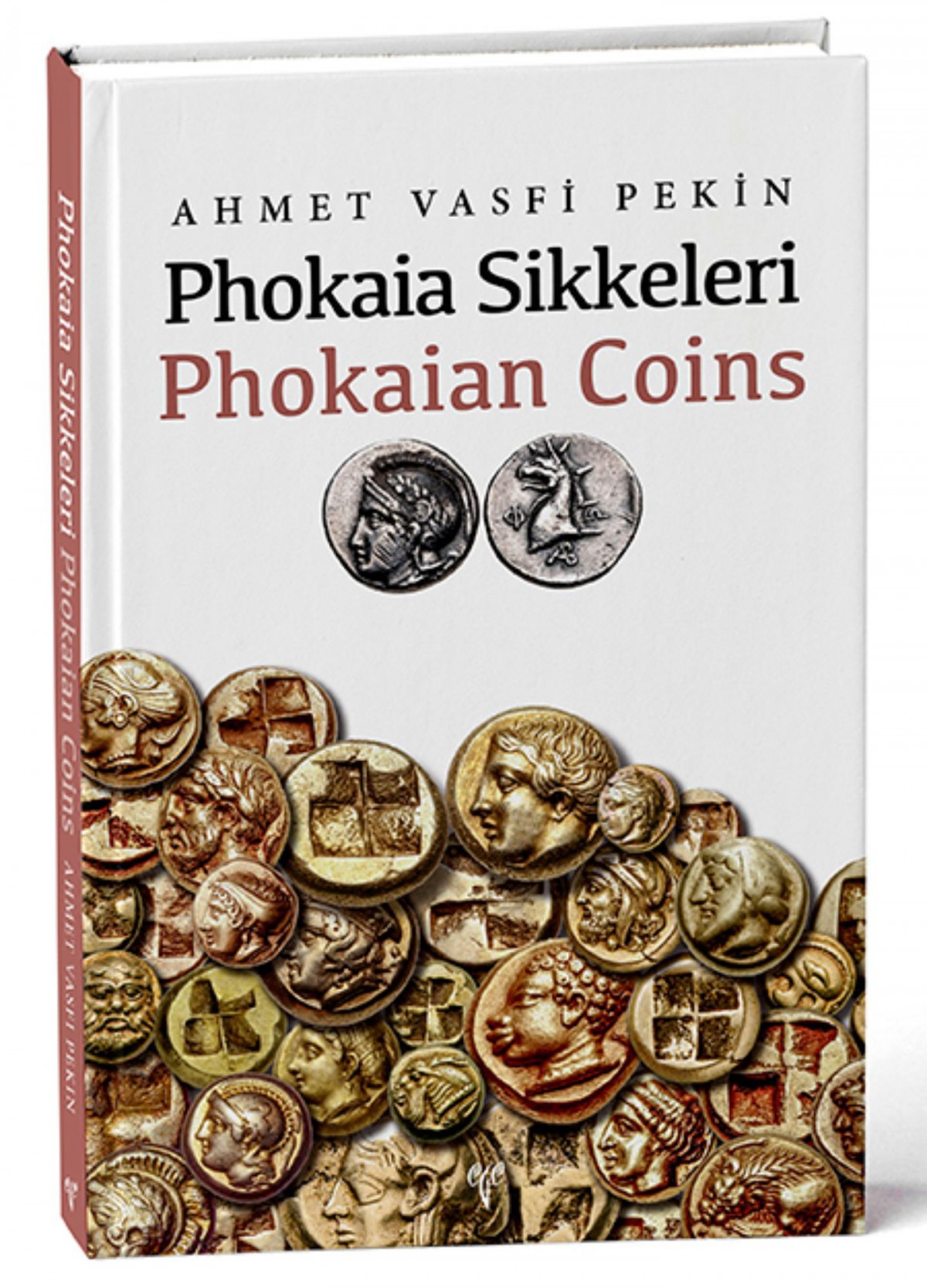viii + 249 pp, color and B&W figures, hb, in Enlish and Turkish bilingual.
Prologue
General Information About Numismatics
- The Need for Coins
- Numismatics and Its Importance
- How the First Coins were Minted
- Images and Inscriptions
Types
Symbols
Legends
Countermarks and Punchmarks
- Raw Materials
- Units and Standards
- The Value of a Coin
- Bronze Coins
- Counterfeit Coins
PHOKAIAN COINS
Introduction
ARCHAIC AGE PHOKAIAN COINS
Archaic Age Phokaian Electrum Coins
The First Alloying Term (625/600-522 BC)
- Coins with the Phokaian Insignia, the Seal
- Coins with the Griffin and its Interpretation
- Coins with Animal Images and their Interpretation
- Coins with the Insignia of Another City
- Coins with the River God Achelous
- Coins with Human Image Types
- Coins With Warrior Heads
- Coins With Female Heads
Evaluation of the First Alloying Term
Western Anatolia after the Persian Invasion
The Second Alloying Term (522-478 BC)
- Changing the Alloy Composition
- The Ionian Revolt and Alliance Coins
- Coins Minted During the Second Alloying Term (Em. 29-50)
Coins with the Seal Image
Coins with the Griffin Image
Coins with Animal Images
Coins with the Insignia of Another City
Coins with God and Goddess Images
Coins Depicting Religious Festivals and Dances
Coins with Warrior and Hero Images
Coins with Gorgoneion Images
- The End of the Second Alloying Term
Archaic Age Phokaian Silver Coins
The Spread of the Phokaian Culture in the Archaiac Age
The establishment of Phokaian colonies
Migration
Phokaian Coins in the Western Mediterranean
CLASSICAL AGE PHOKAIAN COINS
Economic and Political Developments
Classical Age Phokaian Electrum Coins
Overview of the Third Alloying Term
Coins Minted in the First Section of the Third Alloying Term (478-387 BC), Em. 51-97
Coins with Animal Images
Coins with the Insignia of Another City
Coins with Warrior Images
Coins with Cybele and Attis
Coins with Other Gods and Goddesses
Coins Depicting Religious Beliefs and Festivals
Coins with Heads of Satraps Linked to Historical Events
Coins with Human Heads
- The Last Persian Domination Period in Phokaia (387-326 BC)
- Electrum Coins minted in the Second Section of the Third Alloying Term (387-326 BC), Em. 98-112
Coins with Heads of Women, Nymphs and Goddesses
Coin with Sappho
Coin with Omphale
Last Electrum Coins of Phokaia
- The End of the Electrum Coin Minting in Phokaia
- Other Subjects Related to the Electrum Coins in Phokaia
Why Electrum?
Electrum Coin Reverses
The Problem of Counterfeit Coins
The Value of Phokaian Coins
Circulation Zone of Phokaian Coins
Classical Age Phokaian Silver Coins
Classical Age Phokaian Bronze Coins
Phokaian Monetary Agreements
- The Monetary Agreement Between Phokaia and Mytilene
- Other Relations that Imply a Monetary Agreement
Relations with Cyzicus
Relations with Teos
Relations with Lampsacus
Relations with Erythrae
Relations with Velia
THE HELLENISTIC AGE
Political Developments in Western Anatolia
Coin Minting in the Hellenistic Age
- Raw Materials
- Types on the Coins
- Legends on the Coins
- Union Coins
- Western Anatolian City States and Their Own Coins
Hellenistic Age Phokaian Coins
- Royal Coins
- Bronze Coins
Coins with Hermes
Coins with Athena
Coins with Smardos
Coins with Griffin Reverse Types
Coins with Apollo
Some Phokaian Coins Excavated in Phokaia
ROMAN PERIOD
Coin Minting in the Roman Period
- Union Coins
- Civic Coins
- Mints
- Legends
- Obverse Types
- Reverse Types
- Roman Period Phokaian Bronze Coins
- Augustus (27 BC - 14 AD)
- Claudius (41-54)
- Nero (54-68)
- Vespasianus (69 - 79 AD)
- Domitian (81-96)
- Trajan (98-117)
- Hadrian (117-138)
- Antonius Pius (138-161)
- Marcus Aurelius (161-169)
- Coins with Both Lucius Verus and Marcus Aurelius
- Coin with Faustina the Younger as Fecundidas
- Commodus (177-192) 222
- Septimius Severus (193-211)
- Caracalla (198-217)
- Publius Septimius Geta (209-211)
- Alexander Severus (222-235)
- Maximinus (235-238)
- Gordian III (238-244)
- Philip I (244-249)
- Philip II (244-249)
- Coins of Undefined Period
The Rise and Fall of Civic Coins
In Conclusion
Bibliographia




